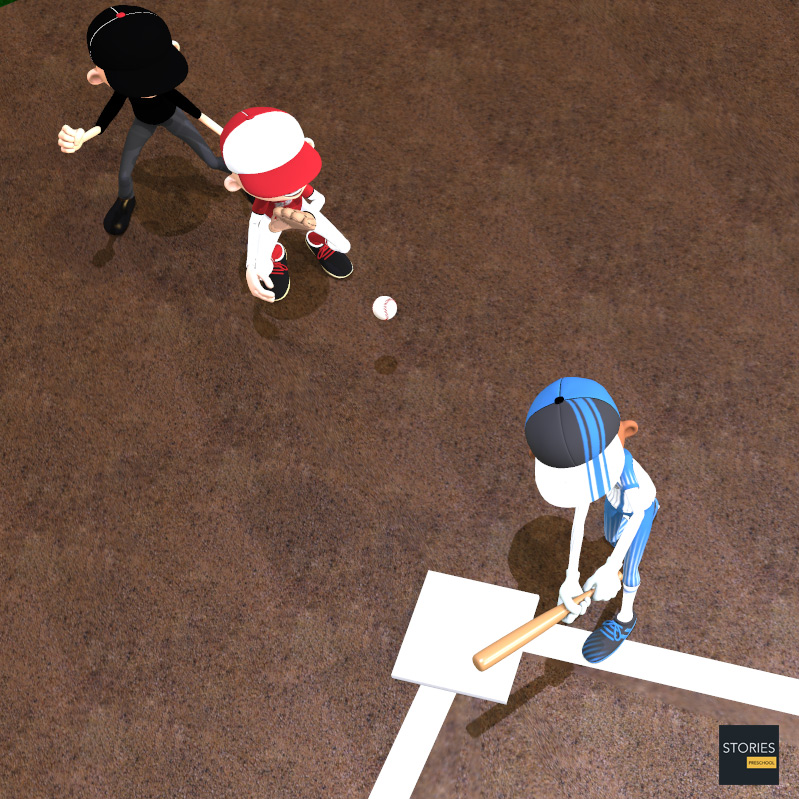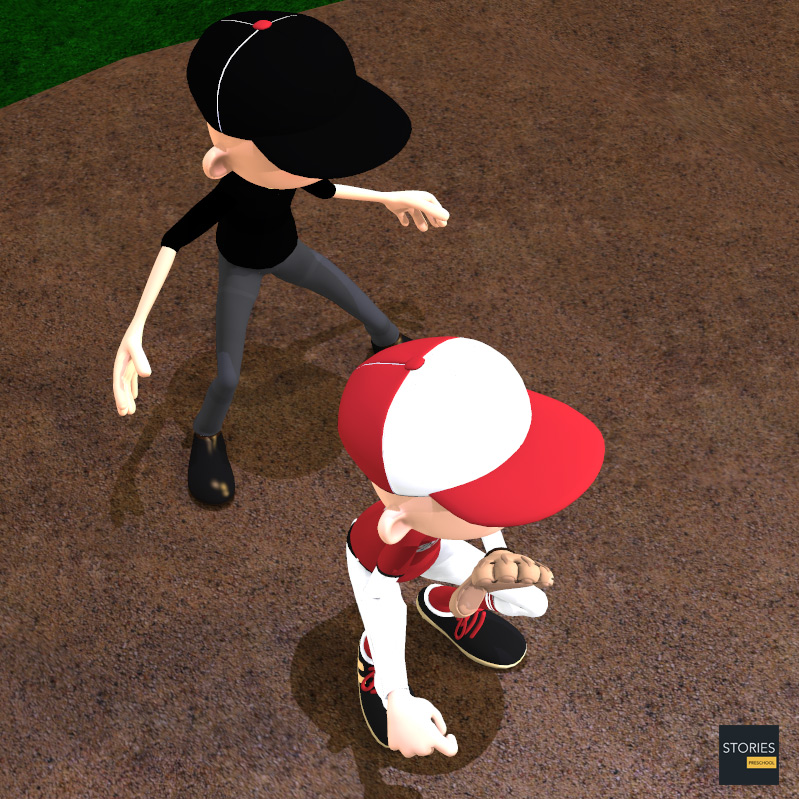Baseball

Baseball Strike Zone
In baseball, the strike zone is the volume of space through which a pitch must pass in order to count as a strike (if the batter does not swing). The strike zone is defined as the volume of space above home plate and between the batter's knees and the midpoint of their torso. Whether a pitch passed through the zone or not is decided by an umpire, who is generally positioned behind the catcher.

Strikes are desirable for the pitcher and the fielding team, as three strikes result in a strikeout. A pitch that misses the strike zone is called a ball. Balls are desirable for the batter and the batting team, as four balls allow the batter to take a base on balls.
Definition
There is more than one set of rules that govern baseball and softball. It depends on the level and league as to which set of rules are being used. The governing bodies for the different sets of rules may have slightly different definitions. As with understanding any rule discussion, you need to know which set of rules are being referenced; Official Baseball Rules (known as OBR), Federation Rules, NCAA, Little League, ASA etc.
The top of the strike zone is defined in the Major Leagues Official Rules as a horizontal line at the midpoint between the top of the batter's shoulders and the top of the uniform pants. The bottom of the strike zone is a line at the hollow beneath the kneecap. It shall be determined from the batter's stance as the batter is prepared to swing at the pitched ball. The right and left boundaries of the strike zone correspond to the edges of home plate. A pitch that touches the outer boundary of the zone is as much a strike as a pitch that is thrown right down the center. A pitch at which the batter does not swing and which does not pass through the strike zone is called a ball (short for "no ball"). The active tally of strikes and balls during a player's turn batting is called the count.
In practice, the strike zone is treated as a volume of space delimited by vertical planes extending up from the pentagonal boundaries of the home plate and limited at the top and bottom by upper and lower horizontal planes passing through the horizontal lines of the definition. This volume thus takes the form of a vertical right pentagonal prism located above home plate. A pitch passing outside the front of the defined volume of the strike zone but curving so as to enter this volume farther back (without being hit) is described as a "back-door strike".
Although the de facto enforced strike zone can vary, the official rules (Rule 2.00, A STRIKE (b)) define a pitch as a strike "if any part of the ball passes through any part of the strike zone."
A batter who accumulates three strikes in a single batting appearance has struck out and is ruled out (with the exception of an uncaught third strike); a batter who accumulates four balls in a single appearance has drawn a base on balls (or walk) and is awarded advancement to first base. In very early iterations of the rules during the 19th century, it took up to 9 balls for a batter to earn a walk; however, to make up for this, the batter could request the ball to be pitched high, low, or medium.
Enforcement
While baseball rules provide a precise definition for the strike zone, in practice, it is up to the judgement of the umpire to decide whether the pitch passed through the zone.

Rule 9.02 of the Official Baseball Rules states that objections to judgement calls on the field, including balls and strikes, shall not be tolerated, and that any manager, coach, or player who leaves his dugout or field position to contest a judgement call will first be warned, and then ejected.
Many umpires, players and analysts, including the authors of a University of Nebraska study on the subject, believe that due to the QuesTec pitch-tracking system, the enforced strike zone in 2002–2006 was larger compared to the zone in 1996–2000 and thus closer to the rulebook definition.
In 2009, a new system called Zone Evaluation was implemented in all 30 Major League ballparks, replacing the QuesTec system; the new system records the ball's position in flight more than 20 times before it reaches home plate. Much of the early resistance from Major League umpires to QuesTec had diminished and the implementation of the new Zone Evaluation system in all the parks went largely unnoticed. Like the old system, the new system will be used to grade umpires on accuracy and used to determine which umpires receive postseason assignments.
SPORTS

RESOURCES
This article uses material from the Wikipedia articles "Baseball" and "Strike zone", which is released under the Creative Commons Attribution-Share-Alike License 3.0.
© Stories Preschool. All Rights Reserved.












